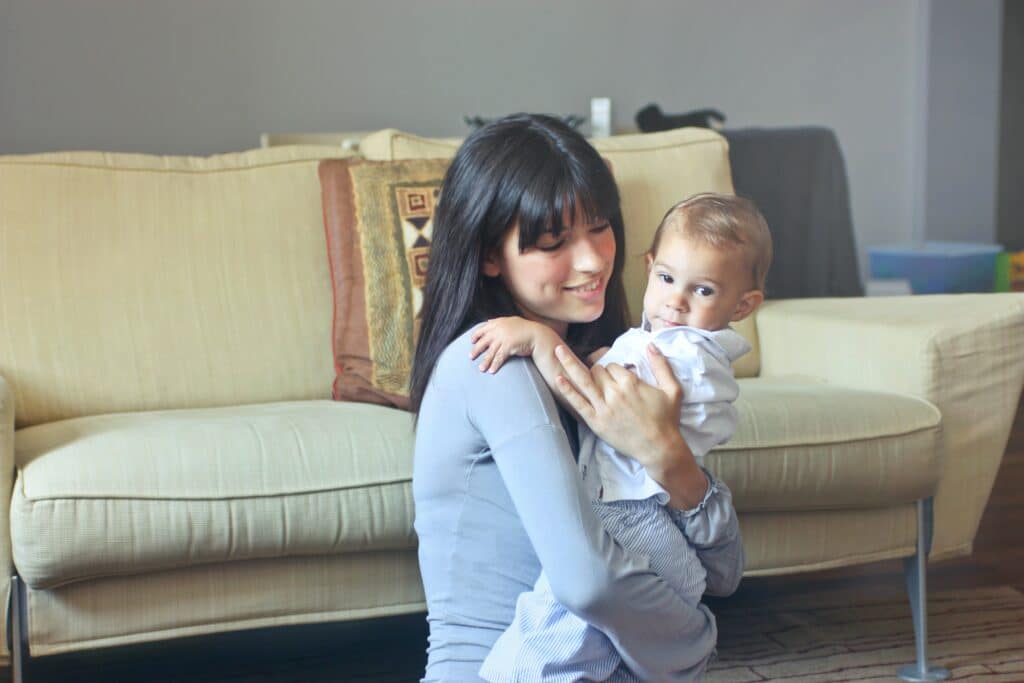 Many people decide to become a doula while growing their families. If you’re a new parent looking to become a doula, it can be hard to figure out how to balance doula work and your family. Can you be a doula while breastfeeding?
Many people decide to become a doula while growing their families. If you’re a new parent looking to become a doula, it can be hard to figure out how to balance doula work and your family. Can you be a doula while breastfeeding?
It can take work and planning, and there are lots of variables, but many are able to be a doula while breastfeeding.
Here is what you need to know about breastfeeding as a doula:
Make Sure You Take Adequate Maternity Leave
There are many variables when it comes to deciding on maternity leave. As a doula, you might have more flexibility than some. However, you could have less flexibility as most doulas are self-employed.
One of the main reasons to make sure you take adequate maternity leave is to ensure you have an established milk supply. Early mother baby separation is often associated with supply difficulties. It can even lead to shorter durations in breastfeeding.
If you have a personal breastfeeding goal of 6, 12, or more months, it’s important to establish a strong supply. The easiest way for most to establish a good supply is frequent and on-demand feeds at the breast.
Write Time For Pumping/Nursing into Your Contracts
Ensure your clients are aware that you are breastfeeding, and you will need to take about 20-minute break every 3-4 hours to pump. In some cases, doulas will have their partner or childcare bring the baby so they can breastfeed instead.
Occasionally, doulas working home births will bring and wear a young baby and feed as needed. This is only considered typical in some birth work circles. It is important that if this is your plan you have an additional support person to care for baby if they become fussy.
You need to ensure your client is not distracted nor left unsupported. Plan thoroughly and make sure there are realistic expectations.
Wearing a milk collection cup can be useful if you’re needing to pump but your client is in transition or pushing. You might have to delay a pumping session here and there; be sure you’re prepared.
Have An Easily Portable Breast Pump
As a birth worker, you’re likely aware of the benefits of a strong, double electric. However, many doulas have some items in their bag making it difficult to carry a large pump.
As a doula, you’re likely only attending a max of one birth per week while having an infant. If that’s the case, unlike full-time work separation, you may not need a heavy-duty pump. Many find a Hakka pump, hand pump, battery or charger operated pump, or smaller double electric pump to be adequate.
Some will also leave their double electric pump in their care and utilize a car charger. This makes for one less item to carry and provides a quiet place to pump. You can also easily store a cooler in your car and not worry about carrying milk out after the birth.
Rest and Recoup With Your Baby
When you’re a doula while breastfeeding, you can take a “nursecation” when you return from a long birth. Take some time to relax in bed with your infant and allow them to feed on demand. Feeding on demand and access to skin-to-skin can ensure your supply is good despite occasional separation.
You can also try a power pump session if you notice a dip after a long birth. Occasionally, our clients don’t follow their estimated due dates (exactly why it’s just an estimate!). If one client goes early and another late, you could find yourself away back-to-back. This might lead to a temporary supply dip. A power pumping session could help.
Have Realistic Expectations If You’re A Doula While Breastfeeding
Both doula work and lactating can be physically and emotionally taxing. Many doulas find that they need to wait several months after giving birth to jump back into work. This allows for healing and establishing a good milk supply.
As a doula, you know the importance of proper birth support. It’s important that if you are a doula while breastfeeding, your lactation needs won’t interfere with your client’s birth support.
You may need to take off longer than anticipated, or you may need to adjust personal lactation goals. There’s no right or wrong, it simply depends on your circumstances as well as your clients. Always be clear and honest with your clients so they can make an informed decision about working with you
